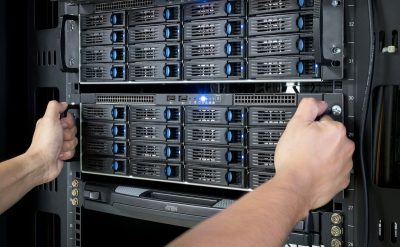Complexity in defining the data category is one of the biggest barriers for the data center success. Data centers facing with such complex problems can do little with infrastructure impediment. Age-old systems with outdated tools and risky processes can lead to data loss and even damage the real-time functions. This keeps businesses away from achieving its full potential. All-flash storage helps in delivering the value for the business by simplifying the current infrastructure by delivering substantial savings.
Let’s take an example of how a flash storage helped in accelerating the financial transaction business of an organization that was affected by the aging data storage. Core database and virtual applications were already using the disk-based storage. The performance requirement kept rising and need of faster performance based memory was felt by the organization to reduce the transaction duration. Using the flash storage the organization accelerated the transaction by 3x times and reduced the cost by 60 percent in regards to space, power and cooling cost.
Many IT teams fail to understand the impact of out-of-date storage on the infrastructure and performance bottom line.
How flash storage helps in accelerating both infrastructure and operations:
1. Cost Cutting: Replace the older storage and equipment to reduce the space taken by the current infrastructure. Reducing the cost of power spent on the functioning of the memory; flash happens to be power efficient and reducing the temperature of the memory system.
2. Increased flexibility: Technology is evolving. Storage has been one of the verticals in technology that has seen drastic development. Flash offers you flexibility in replacement and inducting new tech including cloud.
3. Infrastructure development: Your IT environment needs to change according to challenges or business requirements. Flash storage gives you an opportunity to experiment with the current infrastructure without hampering the environment.
Resizing the Operations
Data centers are considered to be an important part of today’s IT infrastructure. IT teams spend all their time setting up and configuring after that managing and monitoring. This leaves them with too little of time to deal with real hand issues like deploying new applications and services.
Architecting the important data-sets on a flash drive can streamline the operations. Flash storage reduces the number of active components- Controllers, drives, and network connections used. It’s one of the first steps that can be used towards becoming a data control environment.
Flash storage also includes features like fast and simple cloning, backup and restore. It also helps in cloud integration that meets the requirement of data protection and compliance. Flash storage also reduces the time required for running different analytics platform.
One of the main operational needs that are satisfied by the flash storage is disaster recovery. With integrated data protection it can easily automate backup and other manually intensive data management. In case of disaster, data moves easily from all-flash storage to the hybrid cloud without any glitch. As flash storage is faster in memory transfer compared to other physical memory it saves time in case of emergency.
NetApp an all-flash storage solution is one of the easiest storage facilities that can be installed within minutes. Using the NetApp architecture it can deliver performance without constant monitoring of performance. Such features help out the IT department to monitor the security rather than just performance. For more information on flash storage download our whitepaper.
ROI on Flash Storage
Flash storage can easily be customized according to your business requirements and cost of the equipment required is low. Smart IT teams should look beyond the initial price of flash to meet the current business requirement and future business challenges. Modernizing the current storage can save your cost on space, power and even equipment giving you a relentless activity. Gartner study had recently concluded that all-flash storage can pay for itself within five to six months on average.
Conclusion
For enterprises with the goal of attracting customers through applications or websites- Flash storage can act as a benefaction. Customers visiting your website or using mobile apps need quality digital experience. Flash storage reduces the delay of app download or website load time for more than 10 seconds. According to the recent study by Amazon.com, 100ms increase in the loading time can reduce the sales by 1 percent. It’s also best to optimize the environment for heavy traffic from the users on apps and websites.
Many organizations that required hours to create report previously can now finish those within few minutes. This has resulted in better information management between the analytics team and decision makers. Assisting the enterprise to be responsive to fulfill the business needs and channelizing the decision making without delay in information. If you optimize the performance based on flash memory the availability of storage, servers and network enable to deliver an optimized performance for all the applications.
NetApp, IBM, Dell EMC, Kaminario K2, X-IO ISE 900 are some flash storage solutions. To know more download our white paper on flash storage solutions.














